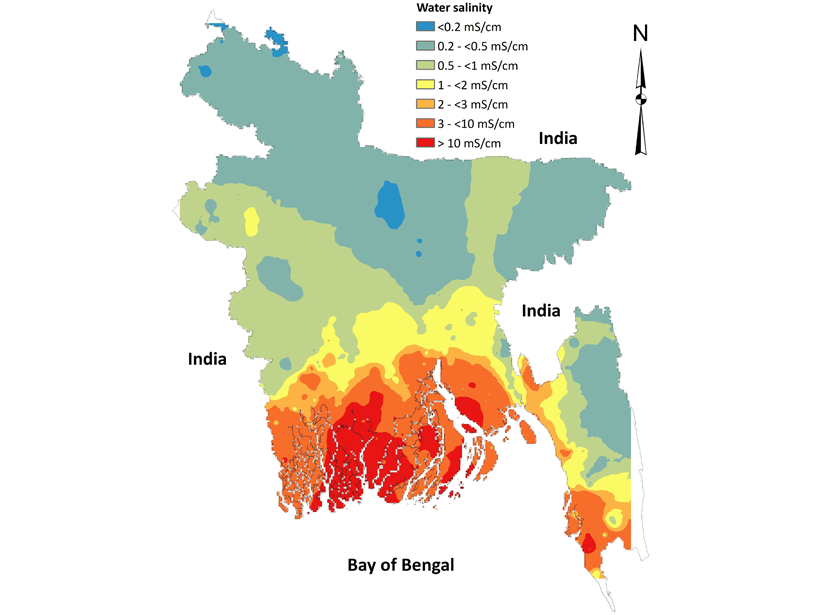Source: GeoHealth
Salinity is a key parameter in water quality assessment. High salinity limits the ability to use water for the domestic and agriculture sectors. Naser et al. [2020] also reveal that the salinity of groundwater can play an important role on child health.
Their geospatial analysis combining salinity distribution and demographic health surveys across Bangladesh found a U‐shaped association between drinking water salinity and neonatal and infant mortality, indicating that even low saline water can induce high child health risks. While high salt levels in drinking water are known to induce health risks, this study shows that calcium and magnesium deficiency in low-saline water can also be associated with high neonatal mortality rates.
Given the global widespread rise of groundwater salinization, this study highlights the importance of the water salinity on human health and the vulnerability of infants and newborns to the quality of drinking water.
Citation: Naser, A. M., Wang, Q., Shamsudduha, M., Chellaraj, G., & Joseph, G. [2020]. Modeling the relationship of groundwater salinity to neonatal and infant mortality from the Bangladesh demographic health survey 2000 to 2014. GeoHealth, 4, e2019GH000229. https://doi.org/10.1029/2019GH000229
—Avner Vengosh, Editor, GeoHealth
Text © 2020. The authors. CC BY-NC-ND 3.0
Except where otherwise noted, images are subject to copyright. Any reuse without express permission from the copyright owner is prohibited.

